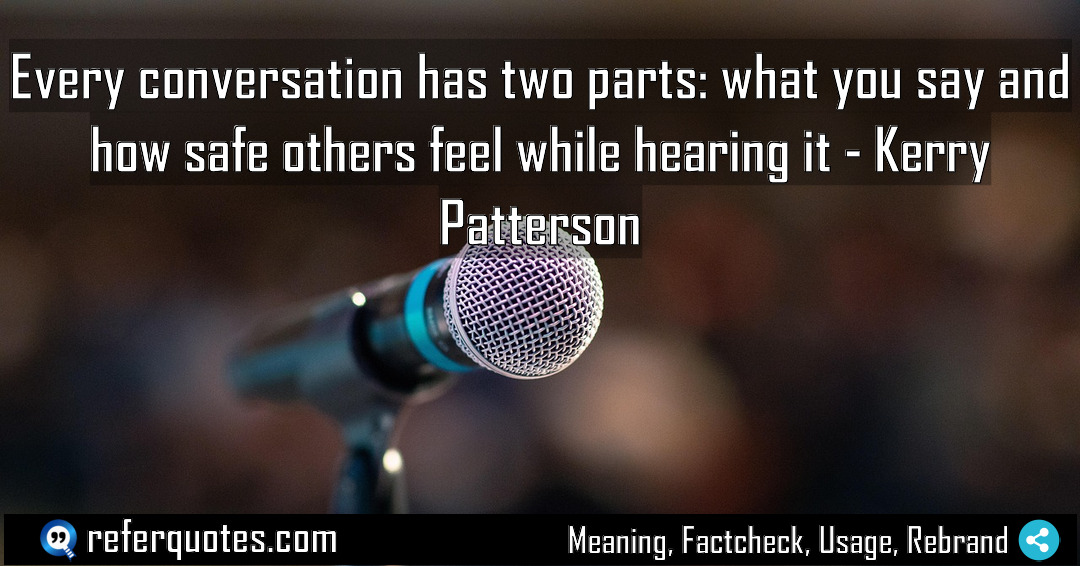Every conversation has two parts is a powerful reminder that communication isn’t just about your words. It’s about the emotional environment you create, because if people don’t feel safe, they won’t truly hear you, no matter how brilliant your point is.
Share Image Quote:Table of Contents
Meaning
This quote flips the script on communication. It says the real magic isn’t just in the data you deliver, but in the psychological safety of the person receiving it.
Explanation
Let me break this down because it’s a game-changer. For years, I thought if I had the right data, the perfect logic, I could win any argument or get anyone on board. I was wrong. This concept teaches us that we’re all constantly, silently, asking one question in every interaction: “Is it safe for me to be honest here?”
When safety is high, conversations are productive. When it’s low? The brain’s defense systems kick in. People either shut down—silence—or they blow up—violence. And I’m not talking about physical violence, but verbal aggression, sarcasm, labeling. It’s a primal response. So your most eloquent argument will be completely lost if the other person feels attacked, humiliated, or misunderstood. Your first job in any crucial conversation is to build safety. Full stop.
Quote Summary
| Context | Attributes |
|---|---|
| Original Language | English (3668) |
| Category | Skill (416) |
| Topics | delivery (7), safety (24), trust (147) |
| Literary Style | clear (348), didactic (370) |
| Emotion / Mood | lively (108), rational (68) |
| Overall Quote Score | 79 (243) |
Origin & Factcheck
This wisdom comes straight from the 2002 business and communication classic, Crucial Conversations: Tools for Talking When Stakes Are High. The authors are Kerry Patterson, Joseph Grenny, Ron McMillan, and Al Switzler—a powerhouse team from VitalSmarts. You’ll sometimes see this idea misattributed to general psychology or other thinkers, but its home is firmly in their research on high-stakes dialogue.
Attribution Summary
| Context | Attributes |
|---|---|
| Author | Kerry Patterson (35) |
| Source Type | Book (4032) |
| Source/Book Name | Crucial Conversations: Tools for Talking When Stakes Are High (35) |
| Origin Timeperiod | 21st Century (1892) |
| Original Language | English (3668) |
| Authenticity | Verified (4032) |
Author Bio
Kerry Patterson coauthors influential books that help people tackle tough conversations, drive change, and build accountability at work and beyond. He cofounded VitalSmarts (now Crucial Learning) and spent decades developing training that organizations implement globally. He earned a master’s degree from Brigham Young University and completed doctoral work in organizational behavior at Stanford, and he has taught and consulted widely. The Kerry Patterson book list includes Crucial Conversations, Crucial Accountability, Influencer, and Change Anything—bestselling titles that continue to shape modern leadership and communication practices.
| Official Website
Where is this quotation located?
| Quotation | Every conversation has two parts: what you say and how safe others feel while hearing it |
| Book Details | Publication Year/Date: 2002; ISBN/Unique Identifier: 9780071771320; Last Edition: 3rd Edition (2021); Number of Pages: 272. |
| Where is it? | Chapter: Make It Safe, Approximate page from 2021 edition |
